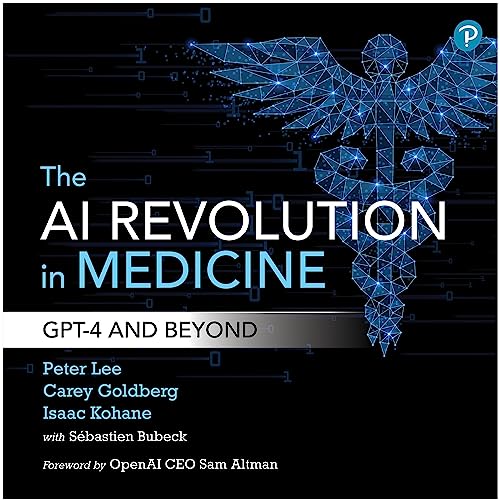
Insight by: Jon Warner
The very well-written, researched and practical book, “The AI Revolution in Medicine’ by Peter Lee, Carey Goldberg, Isaac Kohane, published just a few weeks ago, concludes by saying that we have a lot to do to establish robust governance and standards around AI safety, quality and efficacy across healthcare before we will see it widely deployed BUT.. it is already a powerful and much needed tool today with little or no risk as a secondary check on our processes or as a means to help with the often-heavy burden of our administration processes and systems across healthcare and how much time this regularly takes. In Life sciences this means that much ‘form filling’ can be automated by AI, and particularly Generative AI (GAI), such as Chat GPT, and rendered to be considerably more efficient in many areas, a few of which are listed below:
- Data Management: Life sciences uses vast amounts of data, including research data, clinical trial data, patient information, and more. GAI can assist in data management tasks such as data entry, data extraction from scientific papers or reports, and data organization. By understanding natural language inputs, it can parse and extract relevant information from different sources, facilitating efficient data management.
- Virtual Screening: AI models like GAI can be trained on large data sets to predict the activity, toxicity, and interactions of different drug compounds. This enables virtual screening of potential drug candidates, identifying those with the highest probability of success. By reducing the need for physical experiments, AI can save time from human resources and assist in accelerating the screening process.
- Drug Safety and Pharmacovigilance: GAI can assist in pharmacovigilance activities by analyzing and quickly summarizing adverse event reports, medical literature, social media data, and more to detect potential safety concerns. GAI models can help identify patterns and signals that may indicate adverse effects, allowing for early intervention and improved patient safety.
- Regulatory Compliance: GAI models can aid in ensuring regulatory compliance by automating the analysis of huge amounts of regulatory documents and guidelines. They can assist in the interpretation of complex regulations, providing accurate and up-to-date information to support decision-making processes and reduce compliance errors.
- Literature Review: Conducting literature reviews is crucial for staying up to date with the latest research in life sciences. GAI can assist researchers in this process by summarizing scientific papers, identifying key concepts, and providing relevant references. It can help streamline the literature review process and save time for researchers, allowing them to focus on analysis and interpretation.
- Document Generation: Life sciences has many documentation processes, such as commonly formatted research proposals, protocols, clinical study reports, and regulatory submissions. GAI can aid in generating these documents by providing templates, suggesting content based on input criteria, and proofreading for grammatical errors or inconsistencies. It can improve the efficiency and accuracy of document creation, saving time for researchers and ensuring high-quality outputs.
- Customer Support: Life sciences companies often provide customer support to healthcare professionals, patients, and other stakeholders. GAI can assist in handling basic inquiries in formatted ways, answering frequently asked questions (FAQs), and providing general information about products, services, or procedures. It can also offer 24/7 support for simple known queries, thereby reducing the workload on customer support teams, and providing quick and consistent responses to users.
- Training and Education: GAI can be utilized as an educational tool in life sciences by answering student queries, providing explanations for complex concepts, and offering interactive learning experiences. It can act as a virtual tutor, guiding people through various commonly searched topics and providing real-time feedback. GAI’s ability to understand and respond to natural language makes it suitable for a range of life sciences focused personalized learning experience
These are just a few examples of how GAI can improve administration processes in life sciences today. With its natural language processing capabilities, it therefore has the potential to enhance efficiency, accuracy, and accessibility in various domains within the field and thereby free up resources to focus elsewhere where AI and GAI needs more development before we trust its use.





